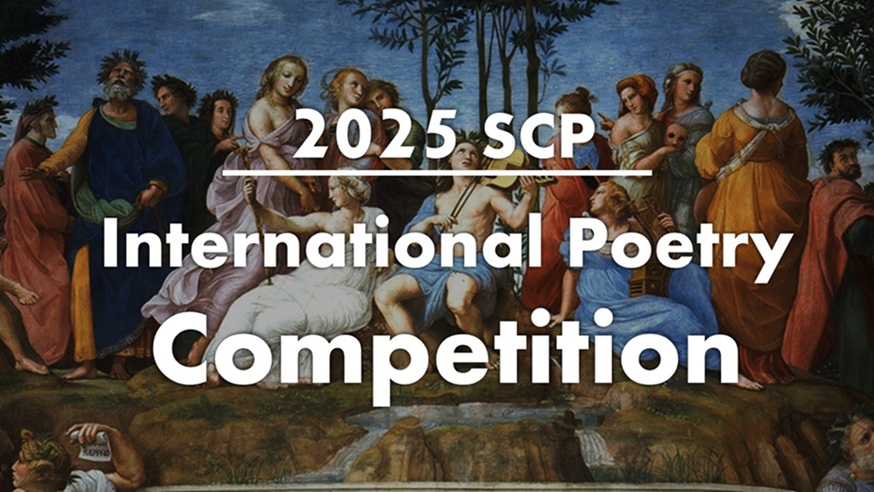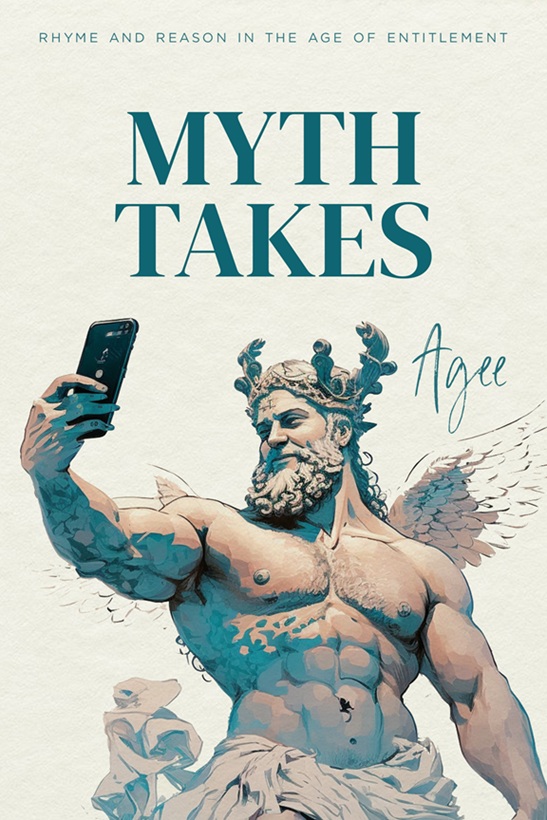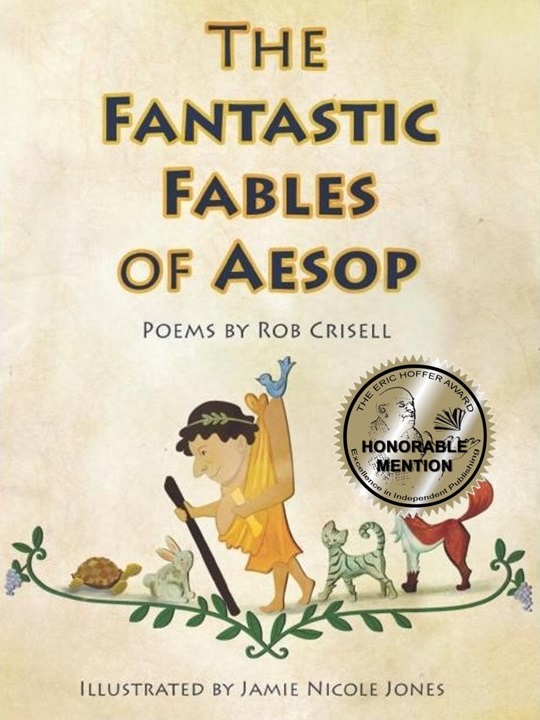Sonnet of the Hardened Heart
Care less, I warn myself; bother no more
With inner crevices: prying the shell
Like scabs (rough, oozing, sore), which crust, but tell
Of tumults against the psychic seabed floor;
It is in vain. Swollen and hard around
The meat (like newborn skin, or the vaginal flower),
The protection, obdurate, damns me. Damn the mound
Which buries my soul and suffocates what little power
My will may afford. That meat, that flower, that skin
(A pulsing pinkish mass) is thus entombed;
And yet, for her to exist at all, the wound
Must needs be sealed by this guardian within.
She lives within her shell; perhaps she dies
As well, because it makes and mutes her cries.
Theresa Werba (formerly known to the SCP community as Theresa Rodriguez) is the author of eight books, including What Was and Is: Formal Poetry and Free Verse, and Sonnets, a collection of sixty-five Shakespearean, Spenserian, and Petrarchan sonnets. Her work appears in numerous journals, websites, and online publications, including the SCP Journal. She has been featured on Classical Poets Live where she discusses musicality and elocution in formal poetry. She is a contributing writer for Classical Singer Magazine. Werba’s background as a Classical singer informs her dramatic poetry readings which are available on Youtube @thesonnetqueen. Her website is www.theresawerba.com.

















This was the earliest sonnet I have written that I can date in my memory– about 1985 or so, I was 23 years old. I had learned something about sonnets in high school but not sure how I ever got into writing them. You can also see that I employed a variant-hybrid form: abba cdcd effe gg. Not sure if that was intentional or the product of inexperience! Still the kernels of a lifetime of sonnet writing are there!
Painfully profound!
Thank you Margaret, I am glad this sonnet resonates with you!!!
You may have been young and emotionally raw when you wrote this poem, Theresa, but it has so many excellent qualities that really point the way to the brilliant future writer that you have become. If you were 23 at the time, you must be in your early 60s now (as am I) and I certainly hope that life in all its fullness has tempered that feeling of Plath-like angst that you express so well!
I think we’ve all gone through the agony of heartache in our youth — an agony which made it feel like we were the first person in the world to experience heartbreak. But there’s nothing trite about your work. Your use of language is exceptional, your imagery — frightening in its rawness. But your ability to craft a sonnet — one which is of an apparently unique but intuitively satisfying form — is terrific. I love seeing early works by writers just the way I love seeing great artists’ early paintings. I prefer your contemporary work, Theresa, but I think this is a poem to be very proud of!
Oh Brian, thank you so much for your kind comments and observations, it means so much to me! Unfortunately “the agony of heartache” has been around via various people through the greater part of my 63 years, but such experiences have certainly created precious fodder for sonnet and other poetry writing. The second section of What Was and Is, entitled “All The Loves I’ve Loved and Known,” has poetry written for nine of them. I placed “Sonnet of the Hardened” Heart in the prologue section, setting up for what is to come. When I think of early works by writers, I actually think of Mozart and several of his minuets– written when he was 5-6 years old! Unbelievable! Thank you again for your words about my words!
This is an ambitious sonnet, which attempts much in its diction, syntax, enjambment, and emotional compression. It does seem the product of youth, in its intensity and strong sense of despair.
The image of the “hardened heart” is saved from being commonplace by making it visible and tangible. What I get from the description is a picture of an actual organ, of living flesh, but somehow covered with painful scabs, or living within a shell like a hermit crab. The speaker wishes to “care less,” but this can only be accomplished by cutting oneself off from the world around her, but doing this does not ease her psychic pain, and it is both suffocating and debilitating.
Changing from abba to cdcd in the middle of the sestet is acceptable, but it does give the reader a slight jolt of uncertainty — which may be what the poet wants. My one formal criticism would be the somewhat wobbly metrics of line 12. There could be several fixes for it, but what comes to my mind is this as a re-write:
Must needs be sealed by this strict guard within.
The trouble with “guardian” is that it could be taken as trisyllabic or as a glide (GARD – yin), and on both cases it is awkward.
Dr. Salemi, thank you so much for your analysis and insights, it means the world to me. The image you see and picture is pretty much exactly what I was thinking of at the time. I appreciate your insight about the change of rhyming in the middle– perhaps it was done unconsciously, and it does indeed provide a “slight jolt of uncertainty,” which hopefully only intensifies the overall intent of this sonnet. Looking now, I see that I must have meant for “guar-di-an” to be three syllables, with one and three stressed, which isn’t really the way it is said, so I understand what you are saying. Maybe such an imperfection can serve to enhance the unsettling impact of the entire poem. Thank you again for your much-appreciated analysis and perspective!!!
An early work displaying early talent, Theresa. What’s really good about it, and not necessarily characteristic of either youth or experience, is the sophisticated structure of speech taking up the imagery into a coherent theme. This is simply a mastery of language, that students are expected to learn and value, then ultimately practice, in worthwhile education. For you here, it culminates in a very effective final line that almost seems inspired, although we can see a parallel structure to “makes and mutes.” Generation after generation has learned that kind of thing, but it takes both talent and inspiration of the moment, from my point of view, to conclude a good poem in that manner.
The fleshy imagery and the “damns” would be typical of young creativity, though never inappropriate when well employed. They also strike me as possibly echoing whatever wave of feminism was breaking on artistic shores at the time you wrote this–or not too long before. Sonnets were practically unthinkable at the time, but there’s more than enough of this theme and material in the modernists. Adrienne Rich and Erica Jong come to mind.
Your oeuvre of sonnets is not truly comparable, but better in many ways. The classic form contributes much, and you are a thoroughly seasoned sonneteer!
Margaret, I am so deeply touched by your appreciative comments and astute observations of my first “official” sonnet of 40 years ago. I do think it was “inspiration of the moment” that brought this poem out of me– little did I know at the time that that particular point would pale in comparison to what was to come years down the road. The “fleshy imagery” and “damns” most definitely came from a place of pain and cynicism– I did not have any (conscious) feminist intentions, just a cri de cœur which I was able to express in sonnet form. And that was way before many more heartaches that befell me over those next 40 years! In retrospect I do see now how having undiagnosed autism (until 10 years ago) is at least part of the explanation for why my life went the way it did in this respect. Most of all, I am so grateful that I can be seen as being “thoroughly seasoned” sonneteer after this many years!!! That means the world to me!!!
To write so honestly, at such a young age, about vulnerability and the hurt of heartache, displays both talent and maturity.
Thank you so much, Paul. I am glad I was able to capture in sonnet form the vulnerability and heartache I had already experienced by my early 20s. I am gratified that these elements resonated with you!!! Nowadays I often write about maturity itself, but more the grey hair, wrinkles, and aches and pains type!
A powerful poem with some powerful images, and a great sense of sound effects: the final couplet, for example: “She lives within her shell; perhaps she dies
As well, because it makes and mutes her cries.” – the internal rhyming of ‘well’ in the ‘shell’ and the marvellous alliteration of ‘makes’ and ‘mutes’. Very accomplished – young or otherwise.
Thank you very much James for your kind comments. I do have to admit that I really do like that final couplet— I always have. I am truly glad this early attempt at sonnet writing has stood the test of time!!!